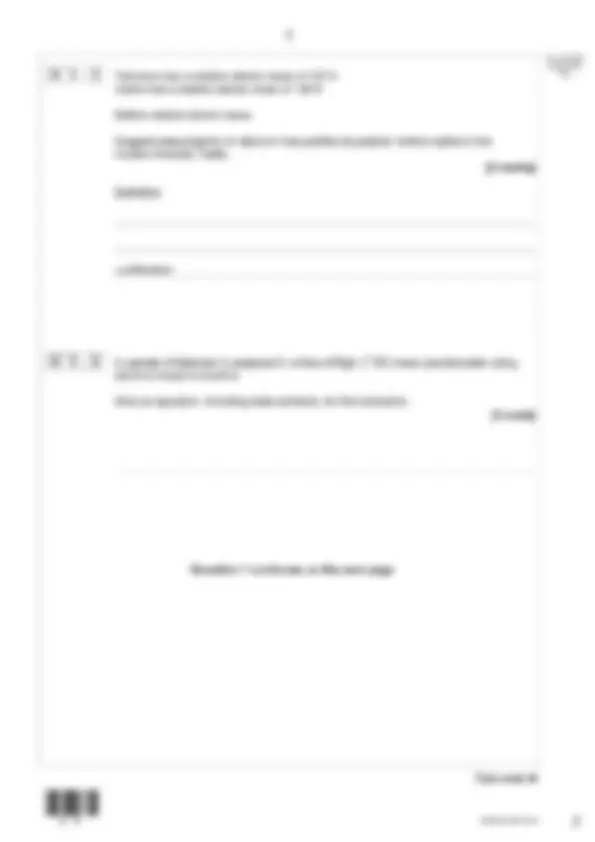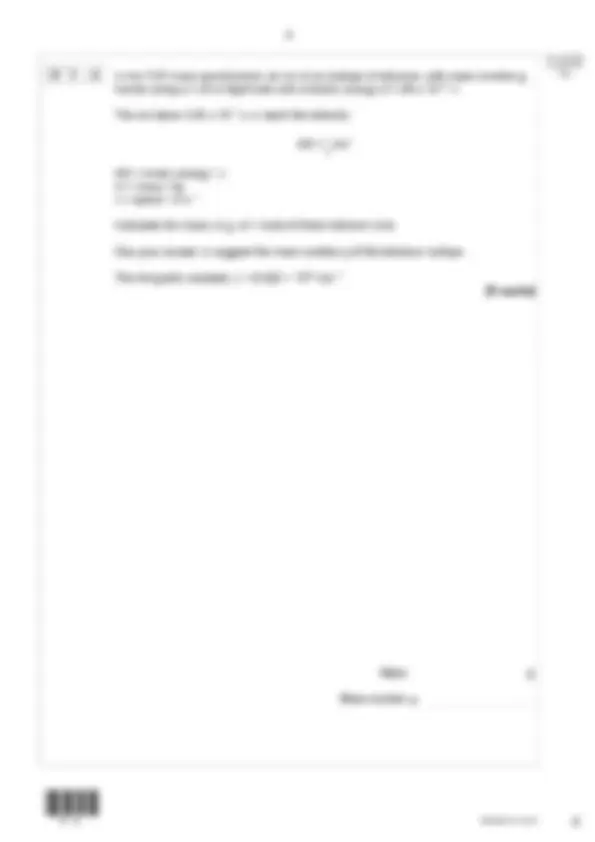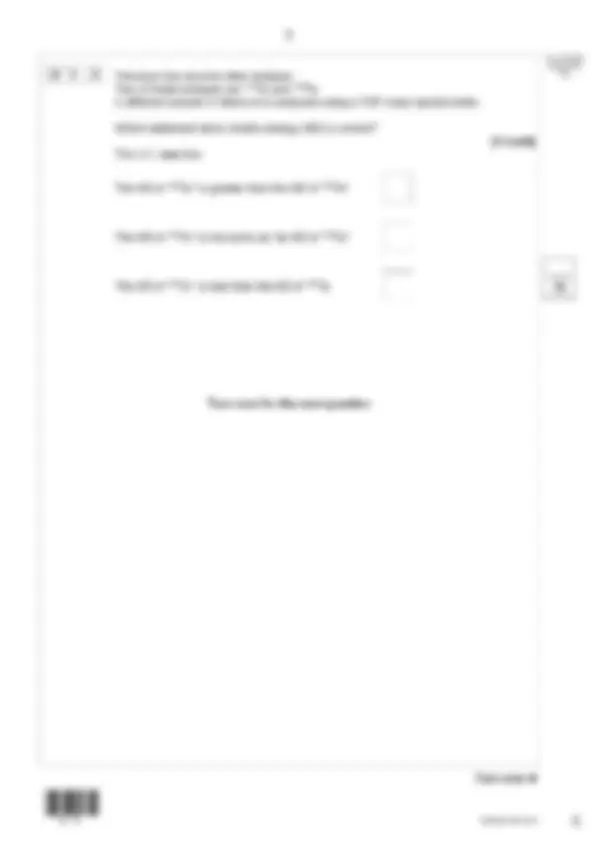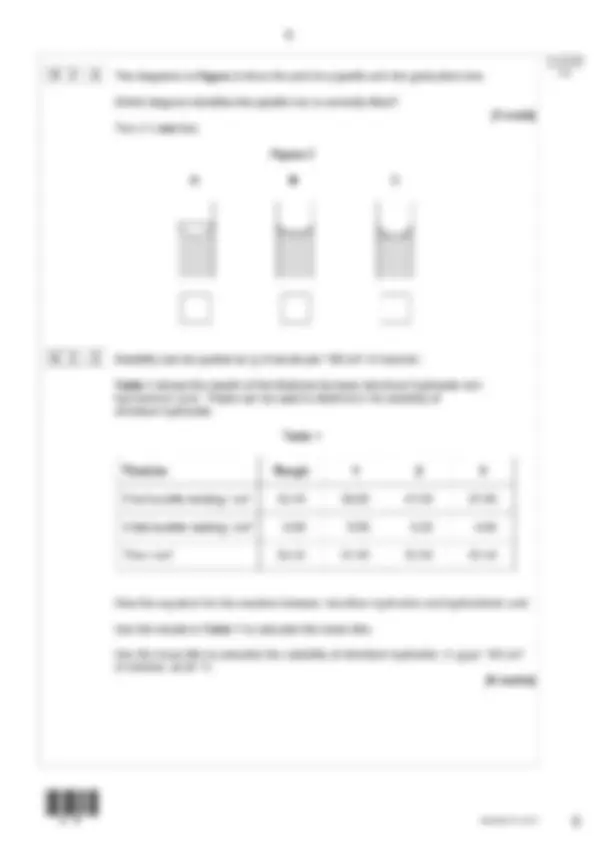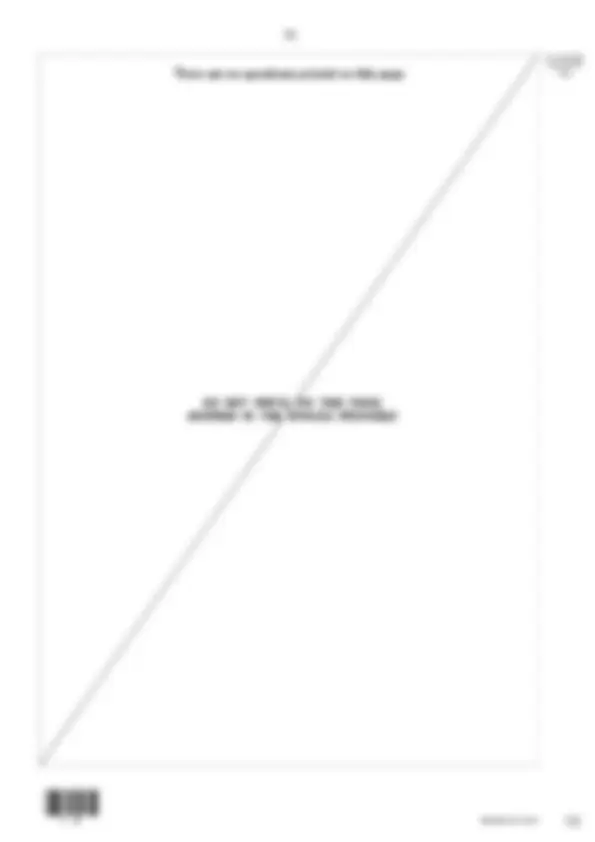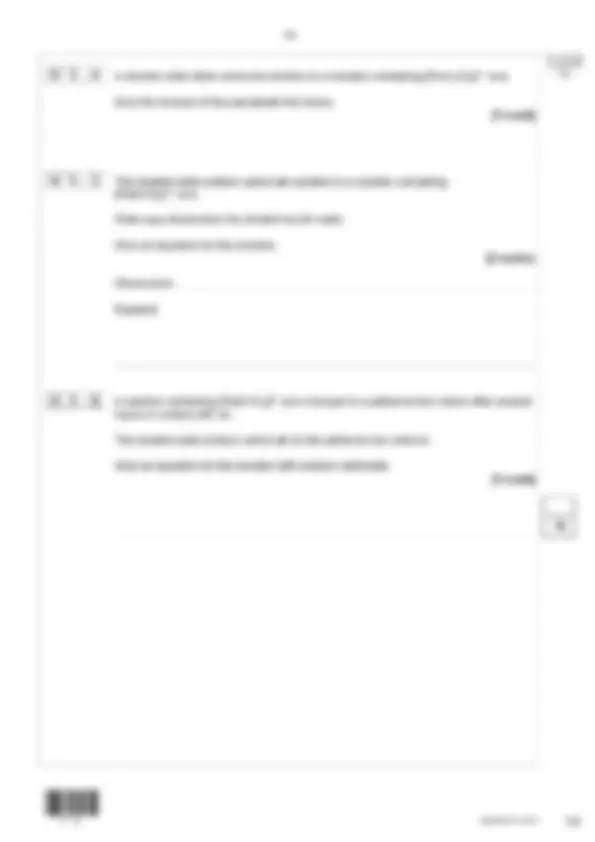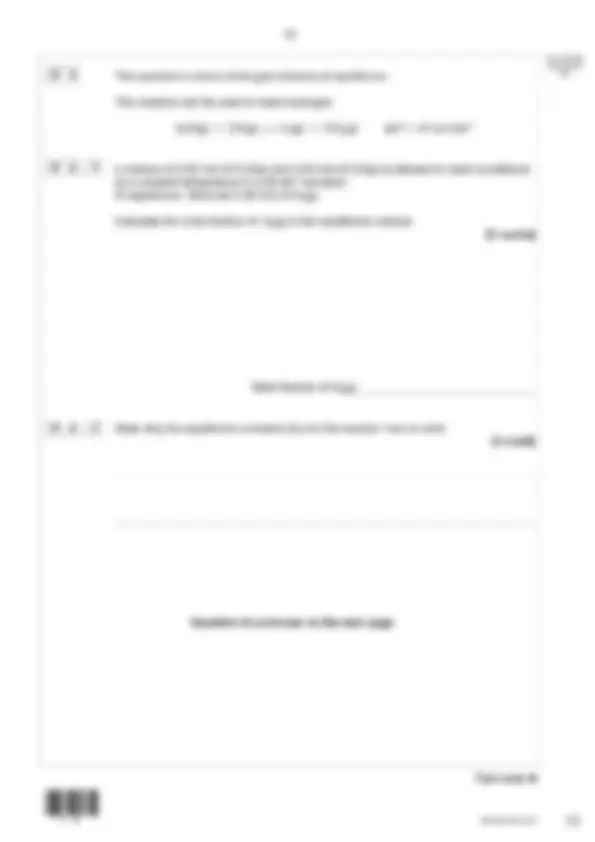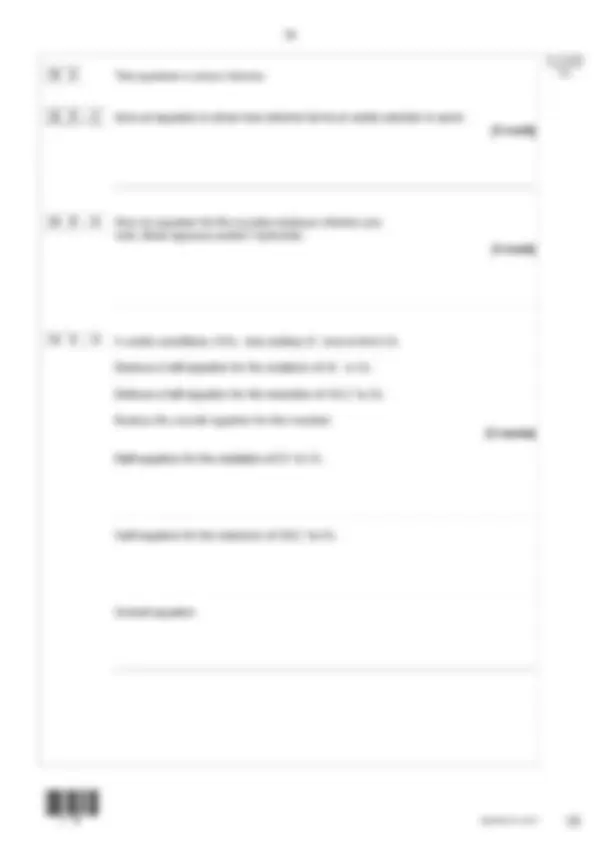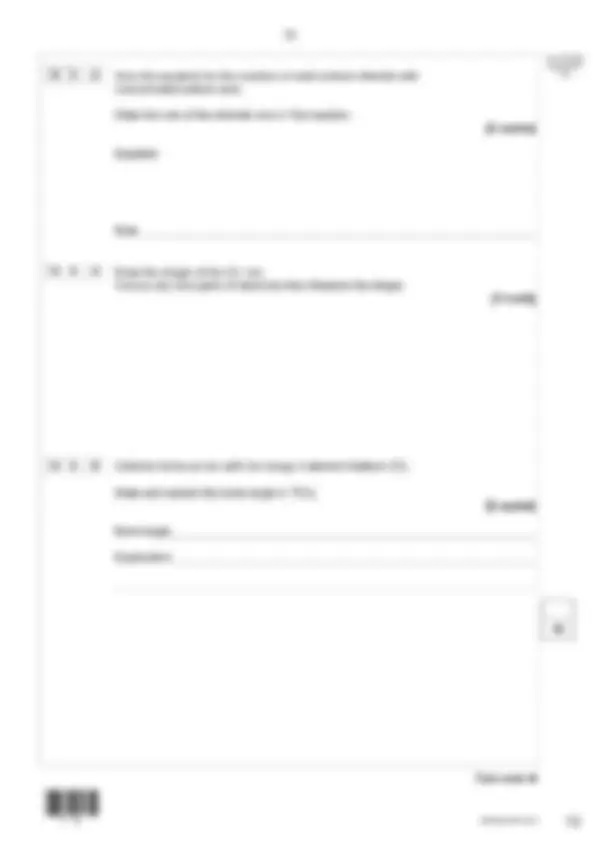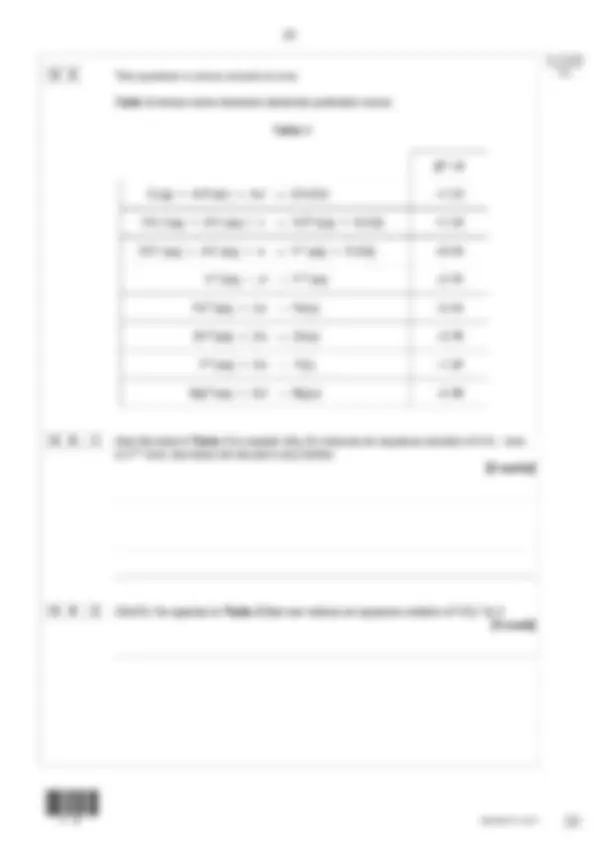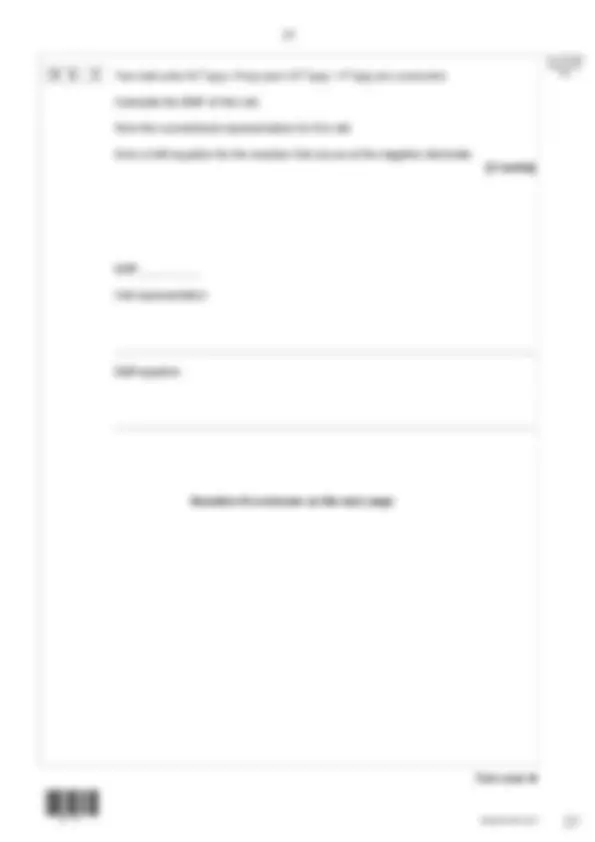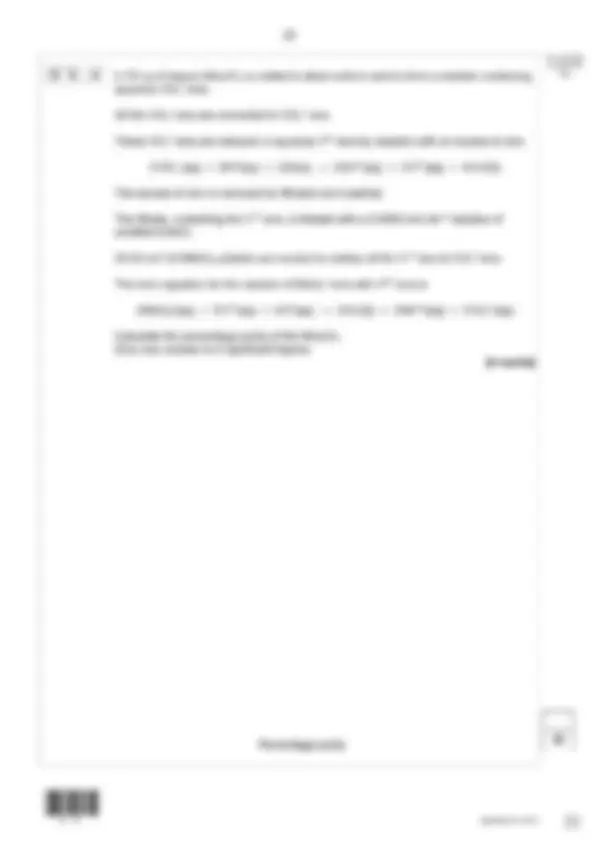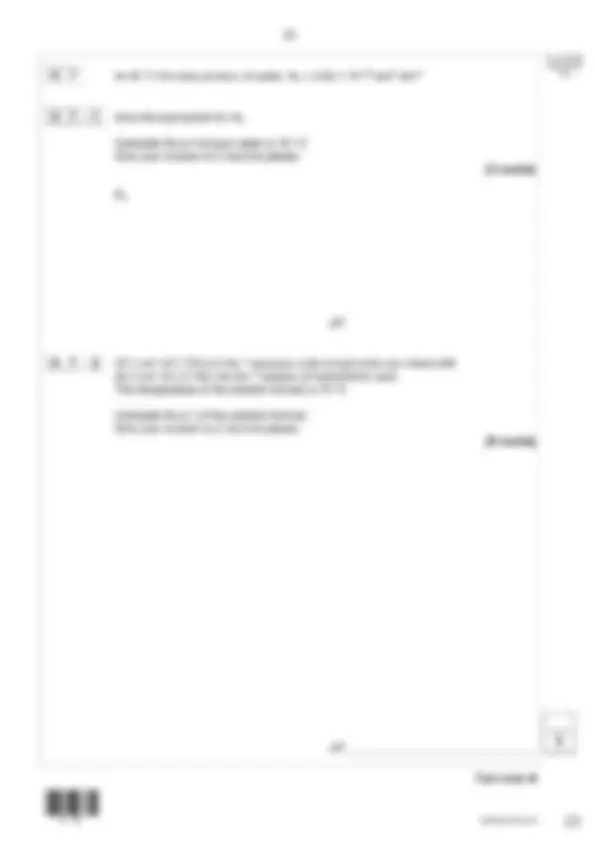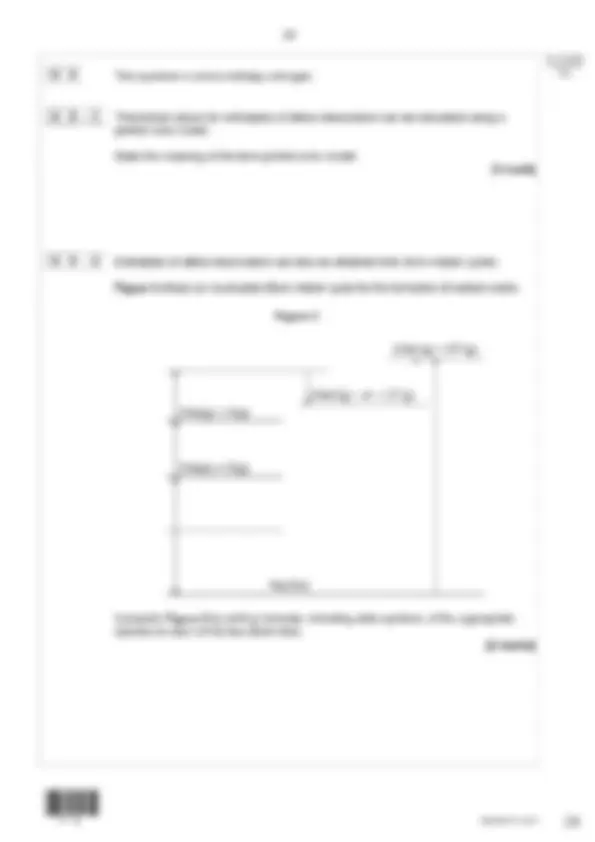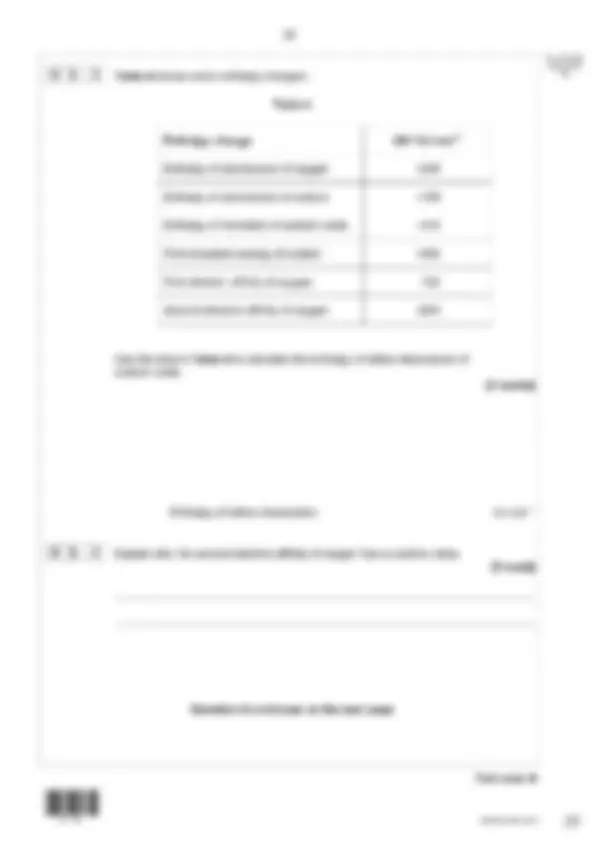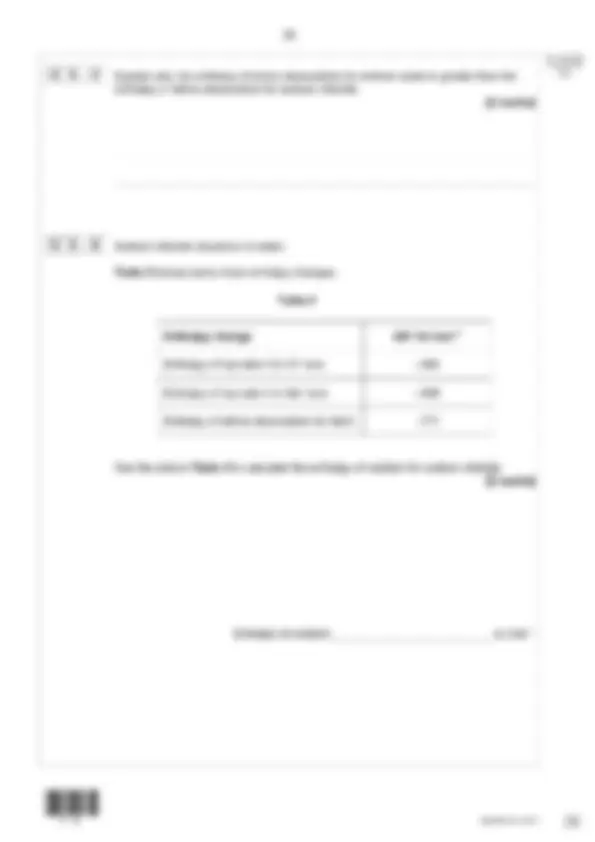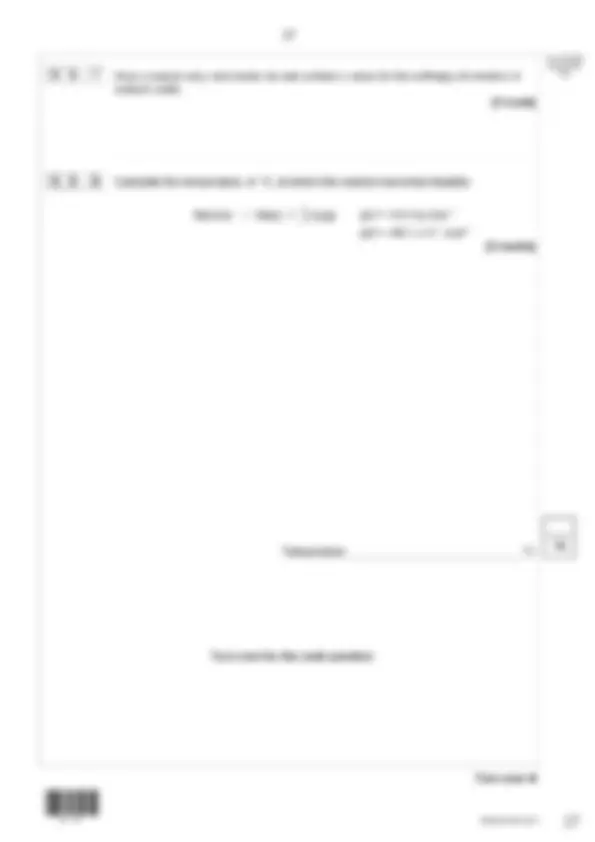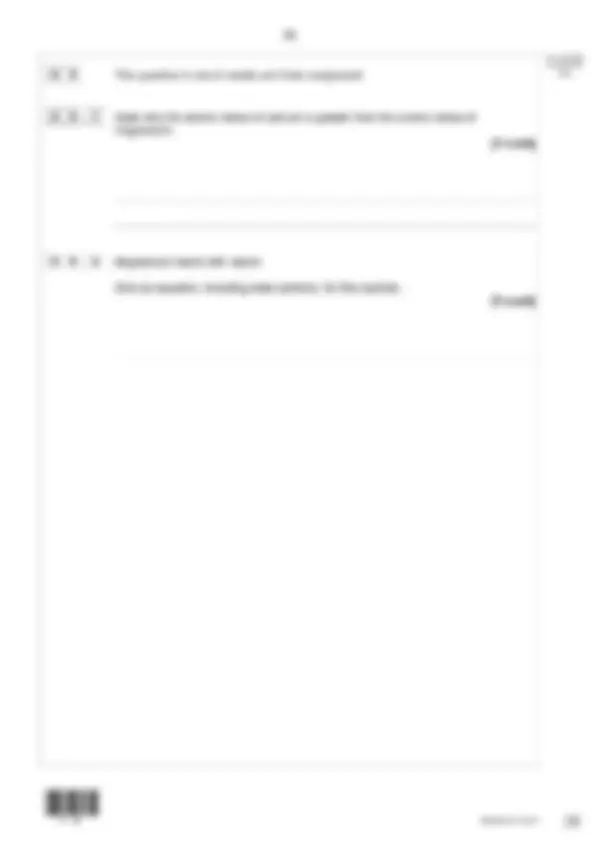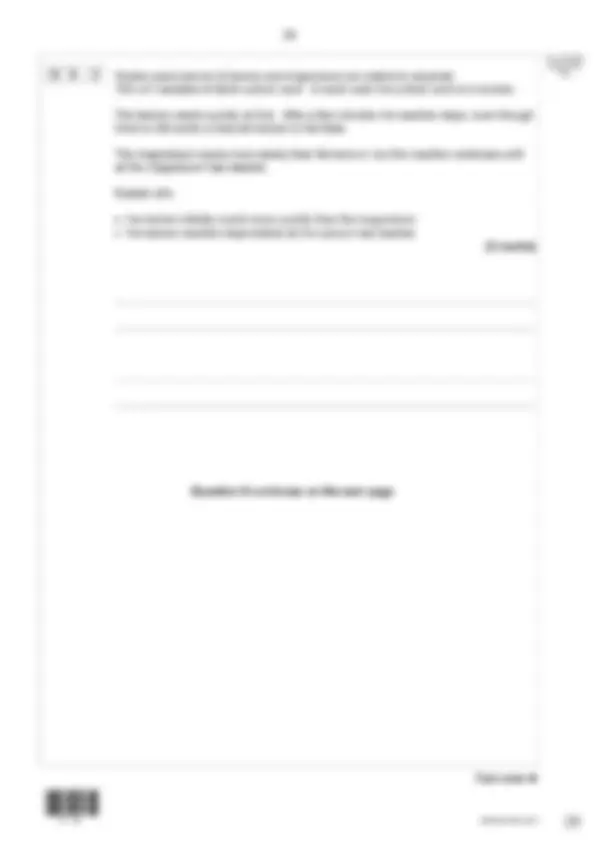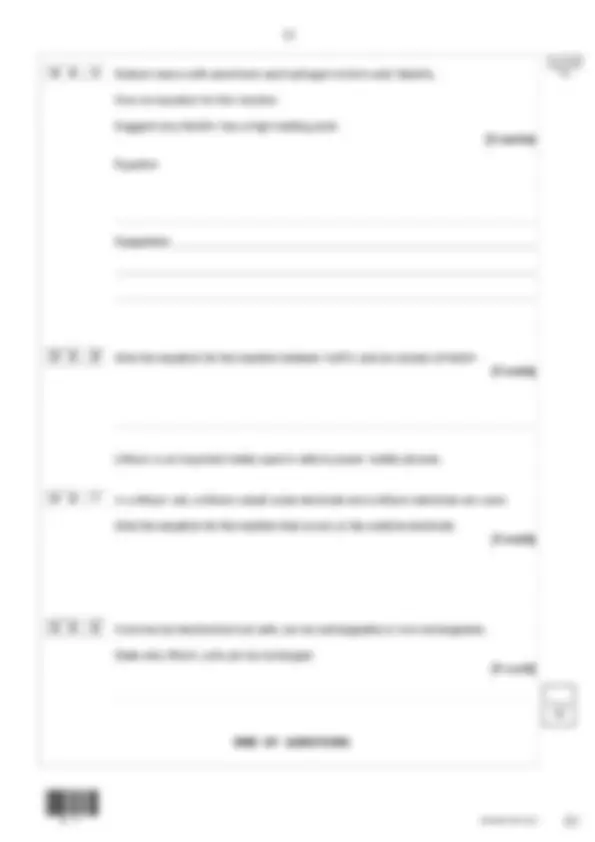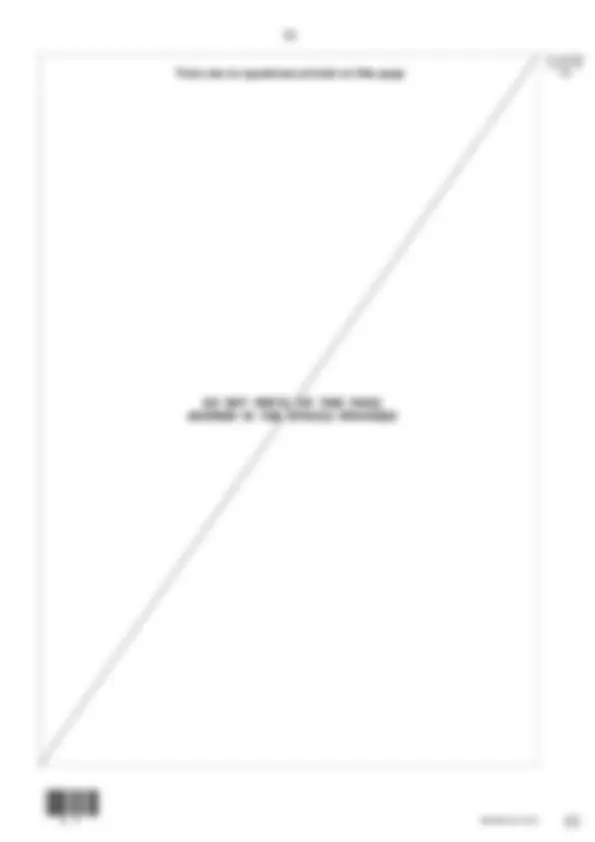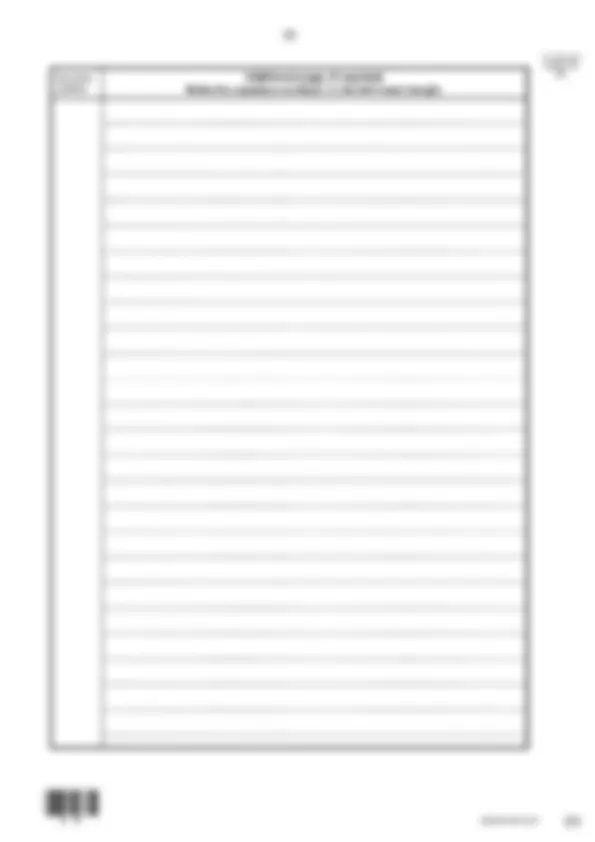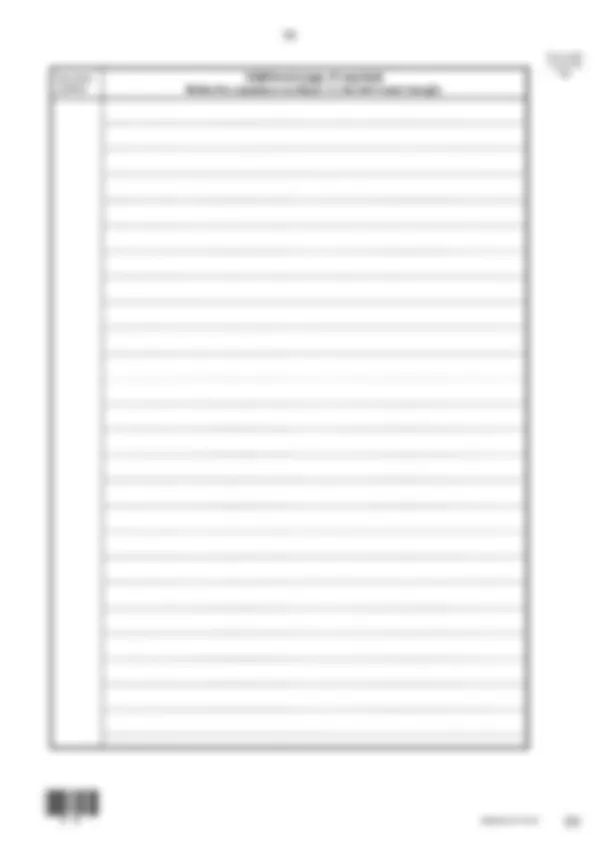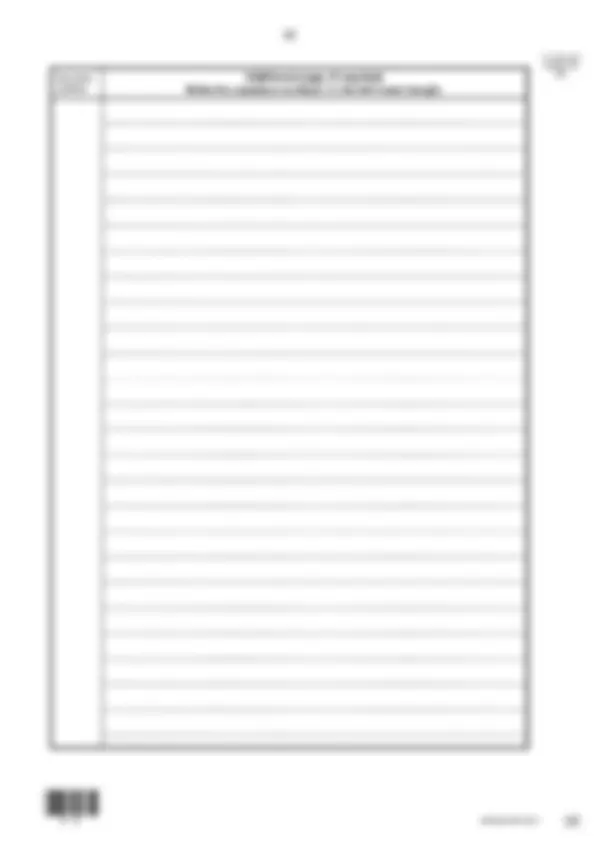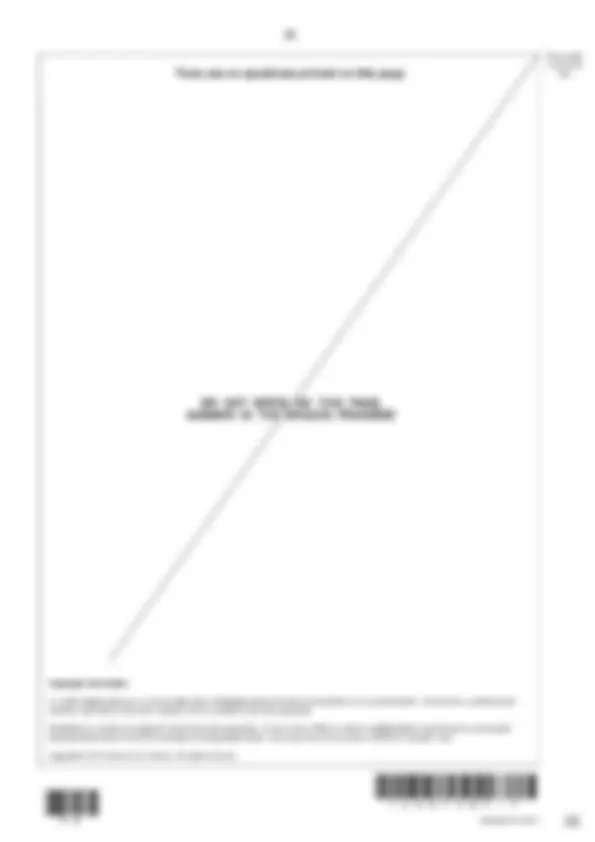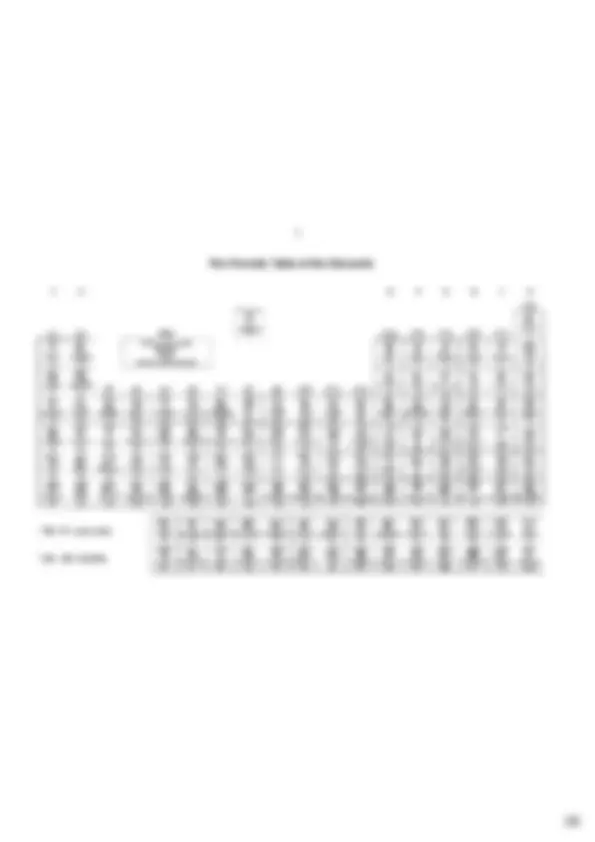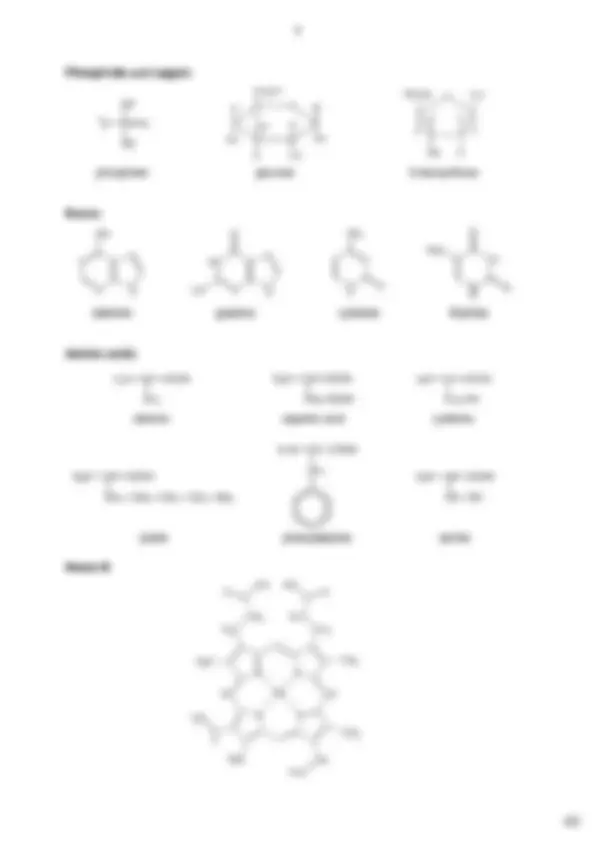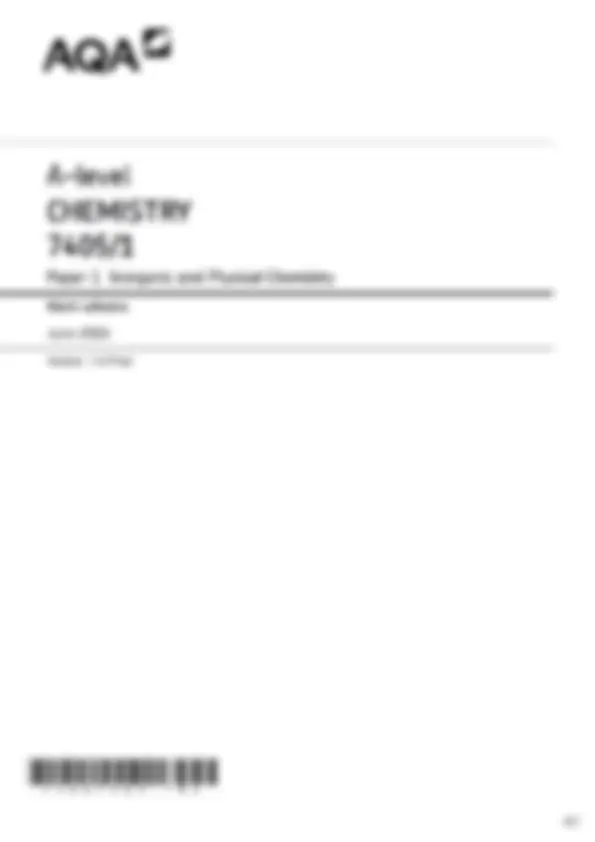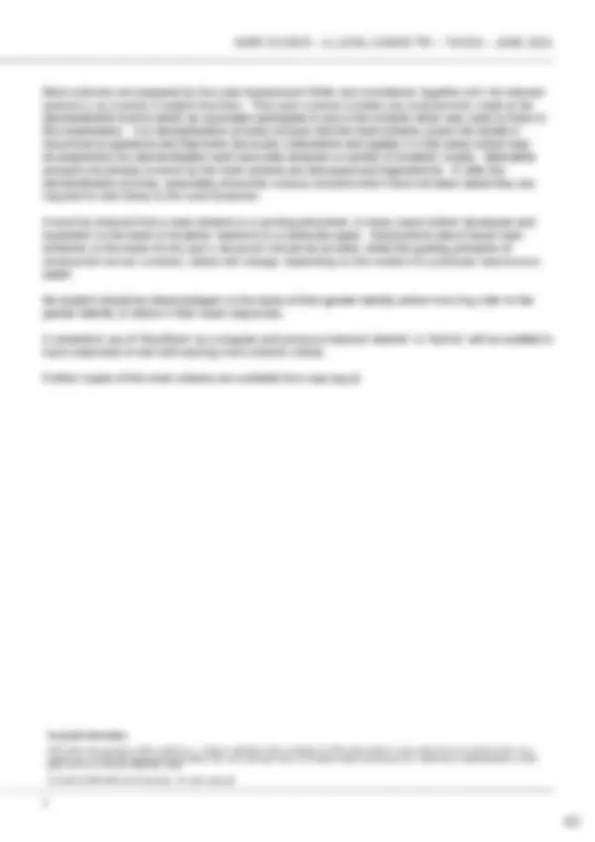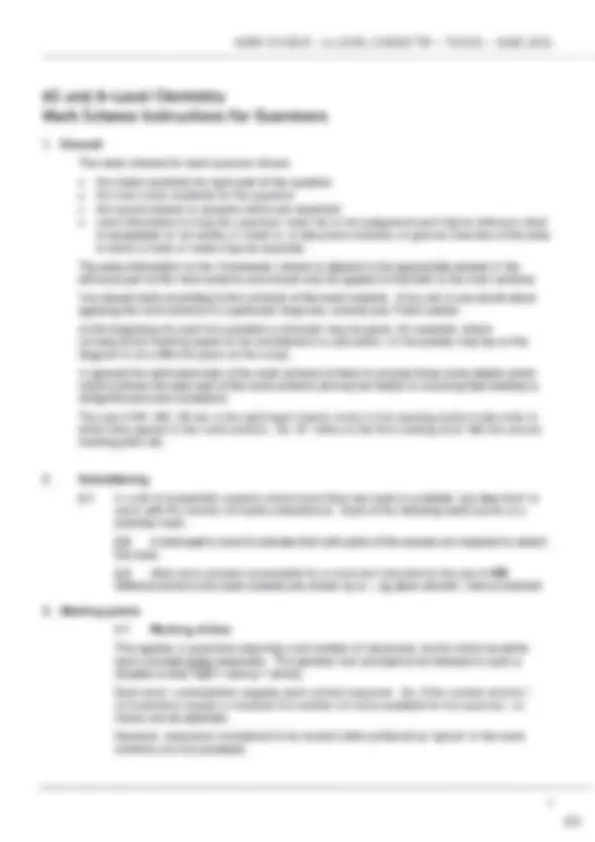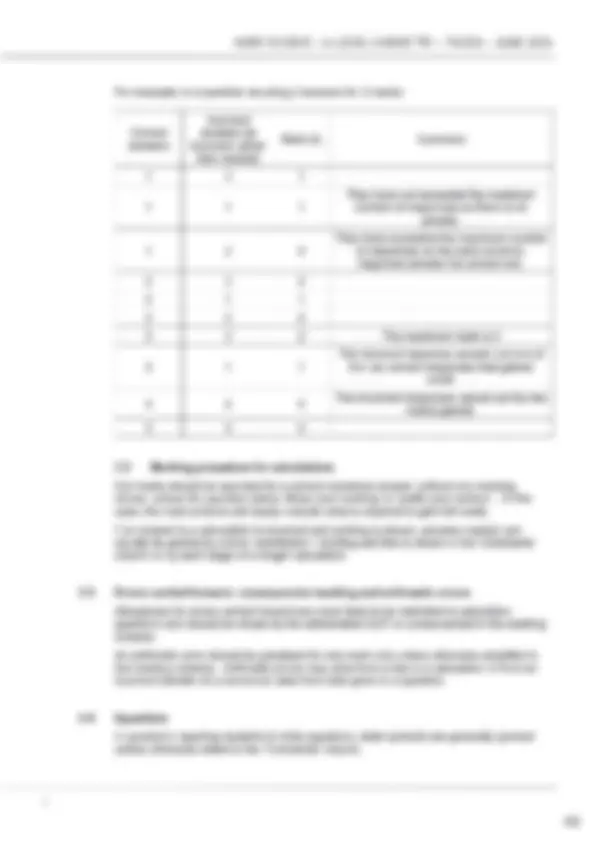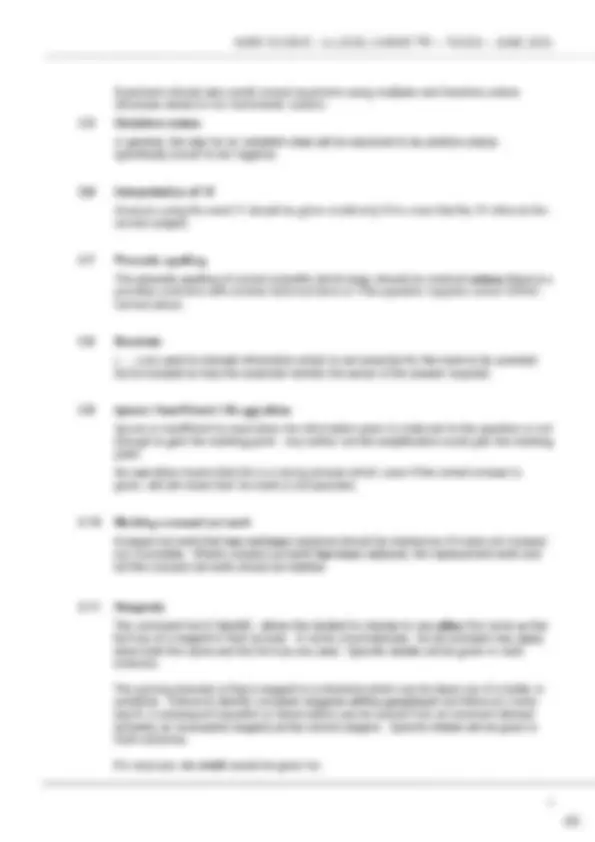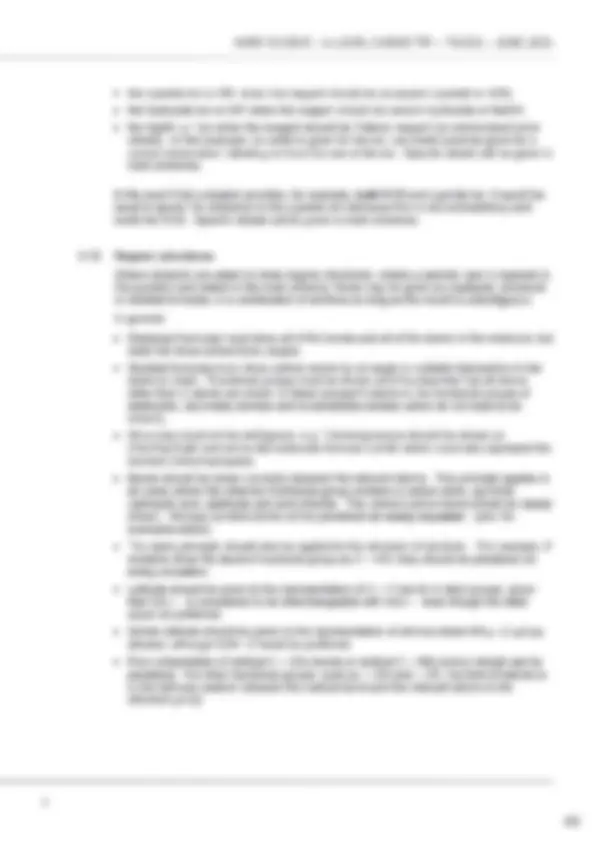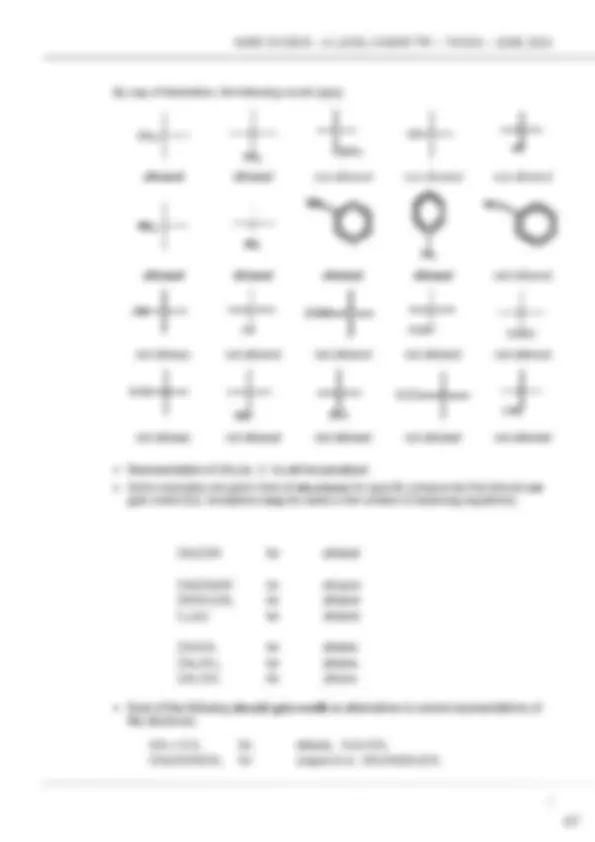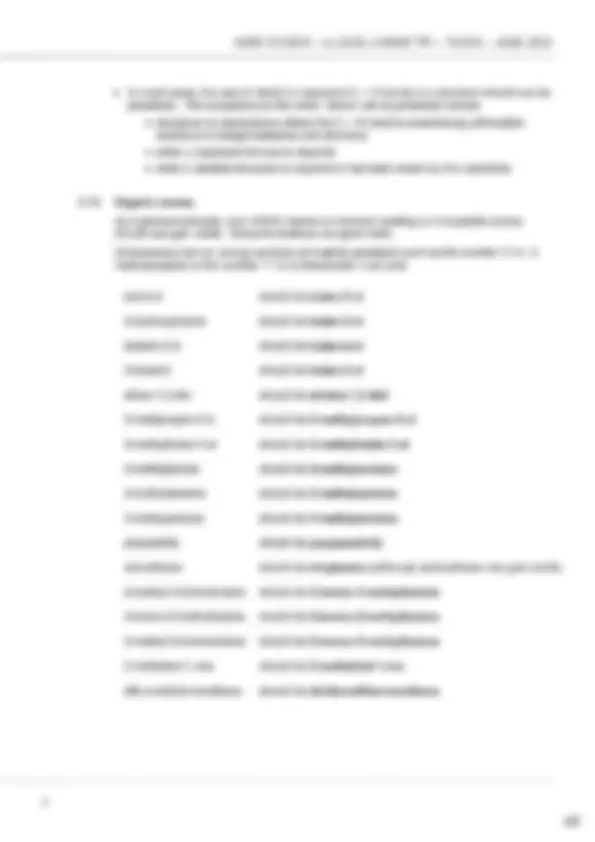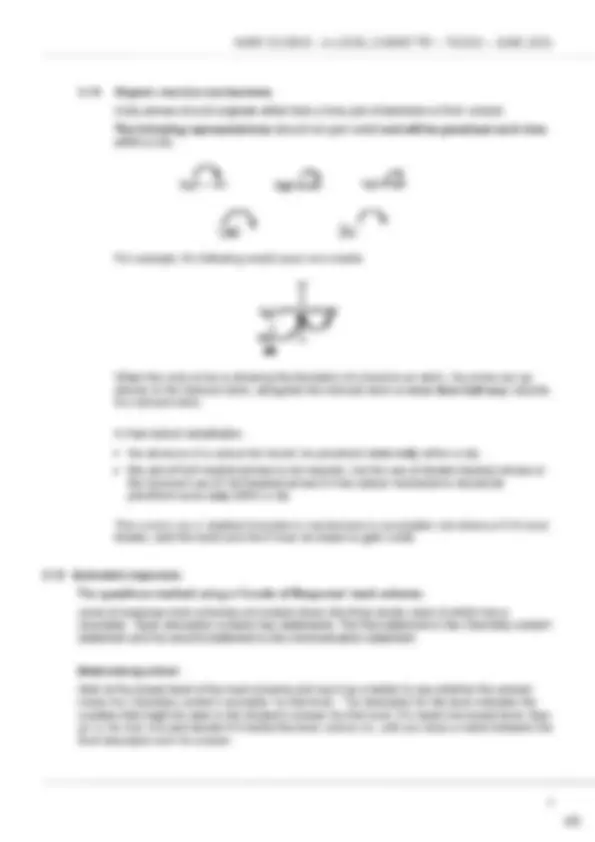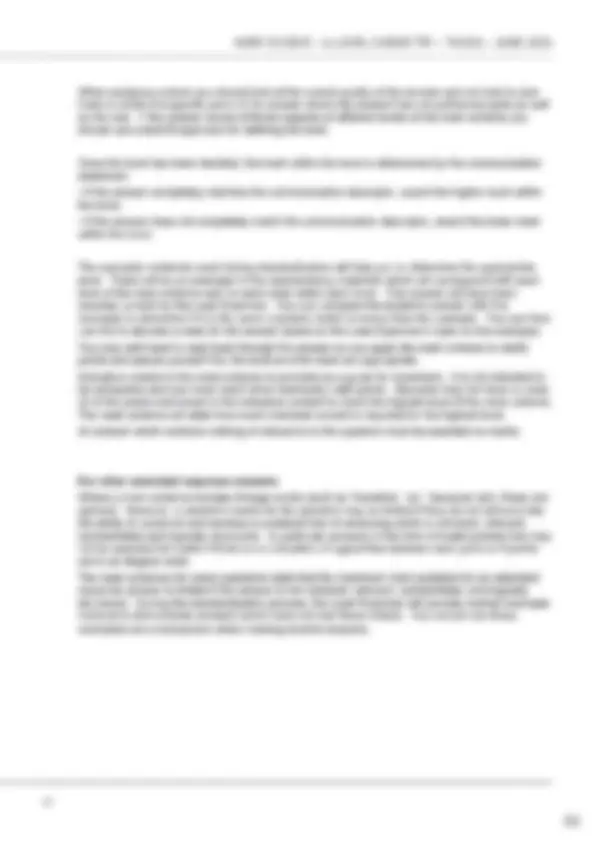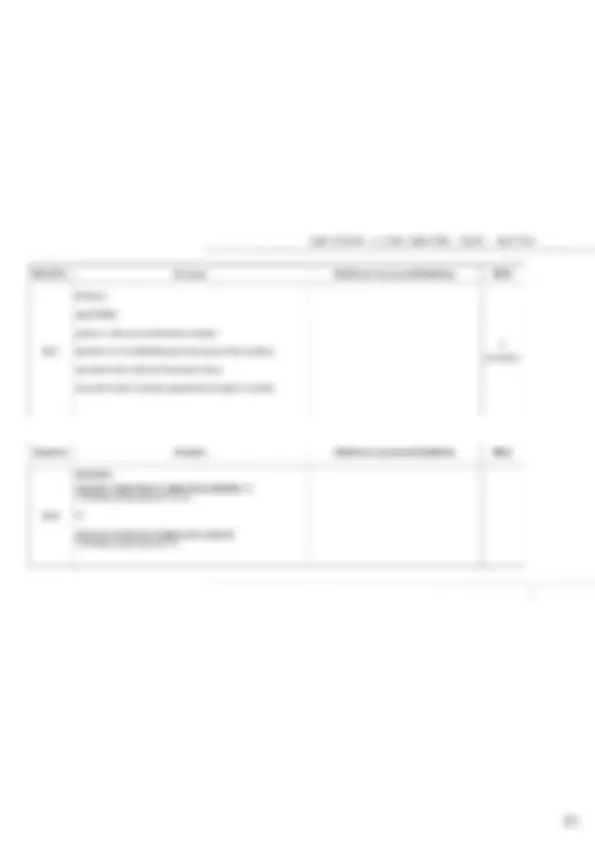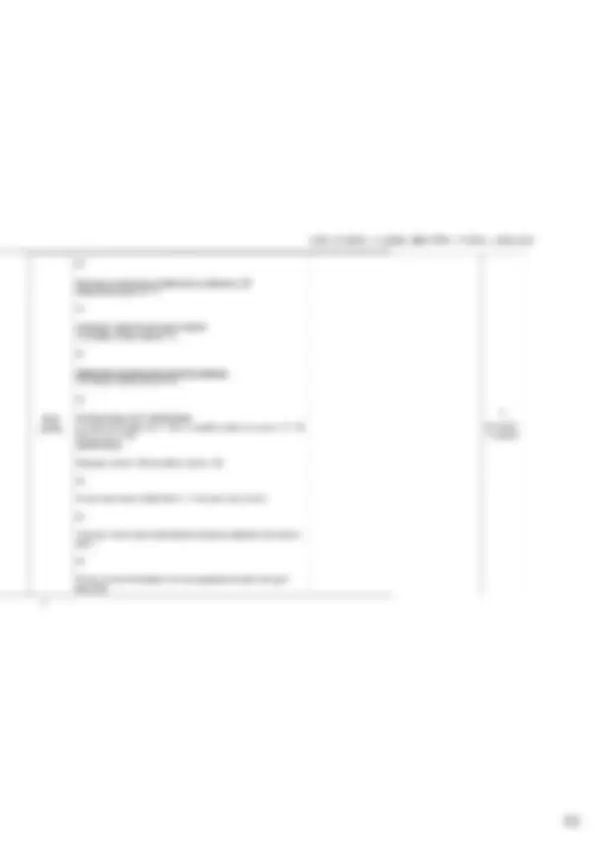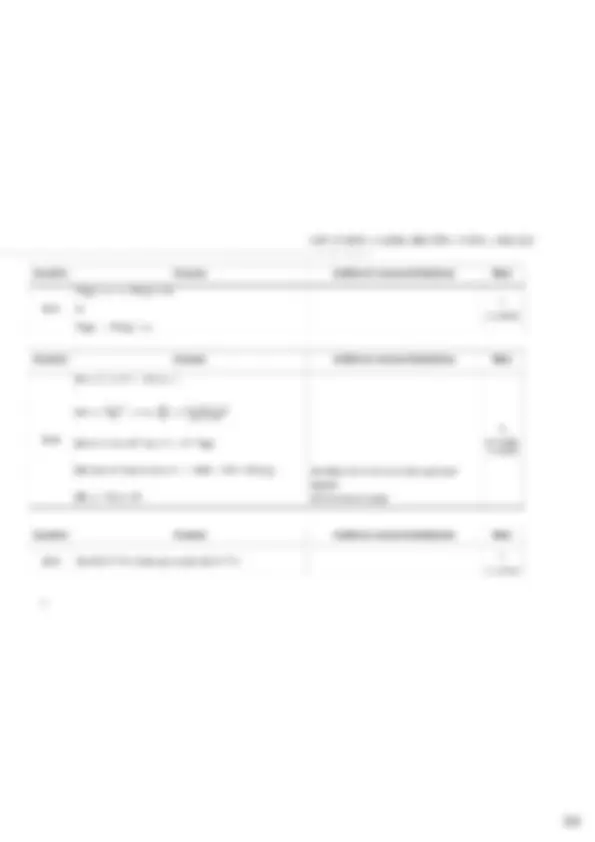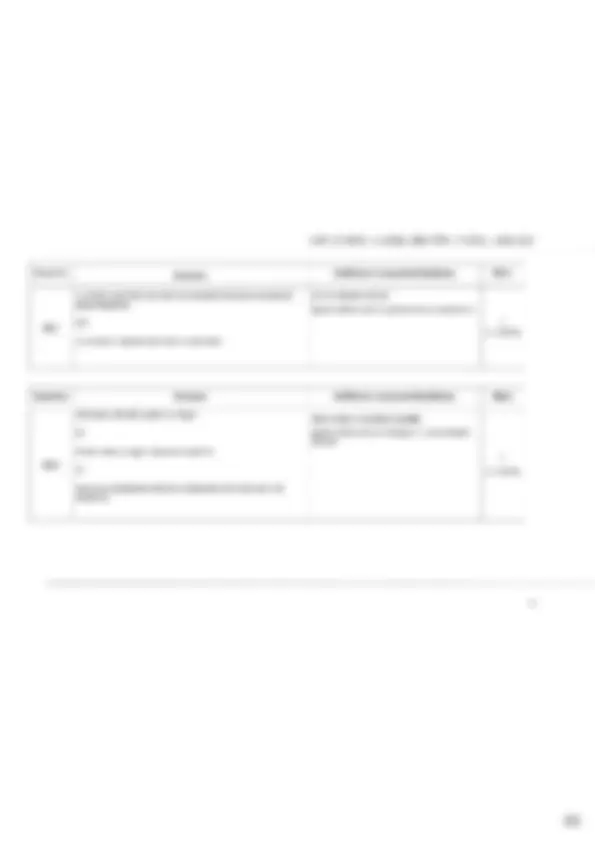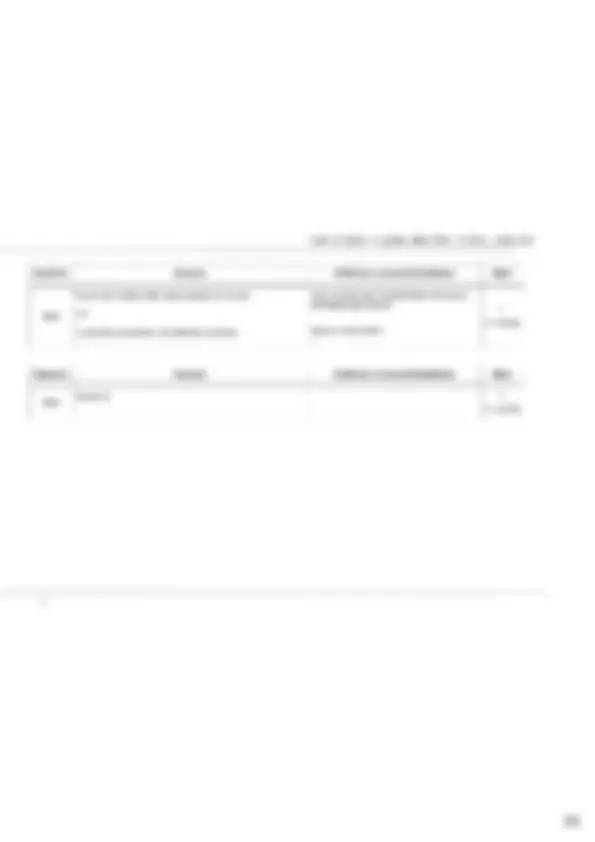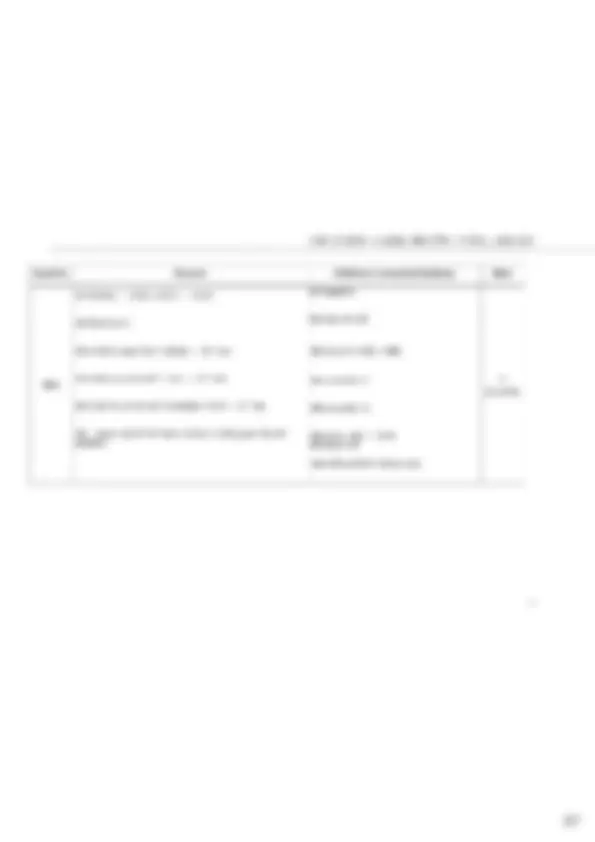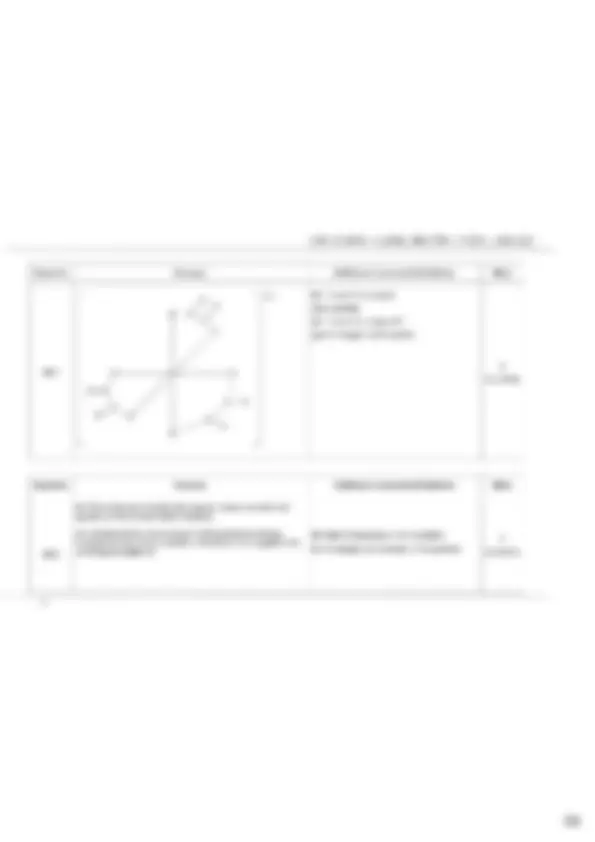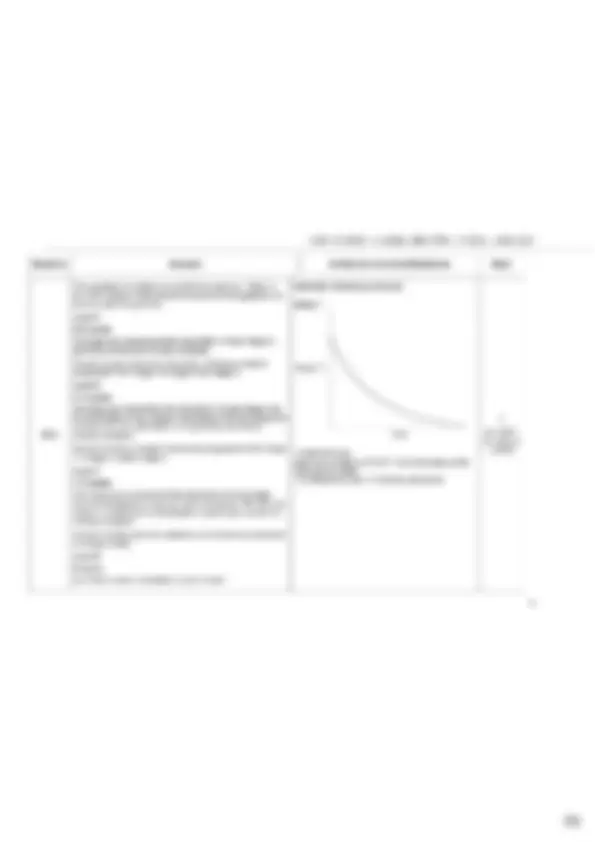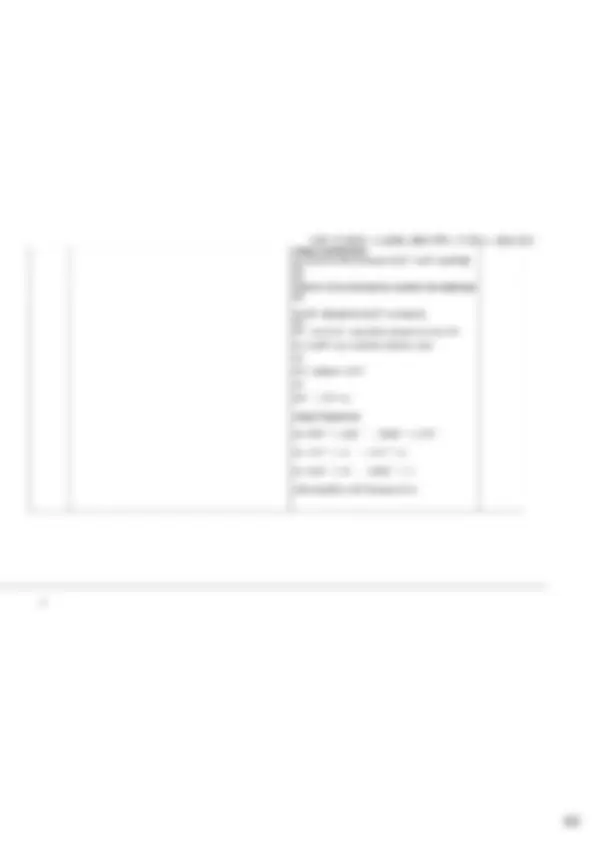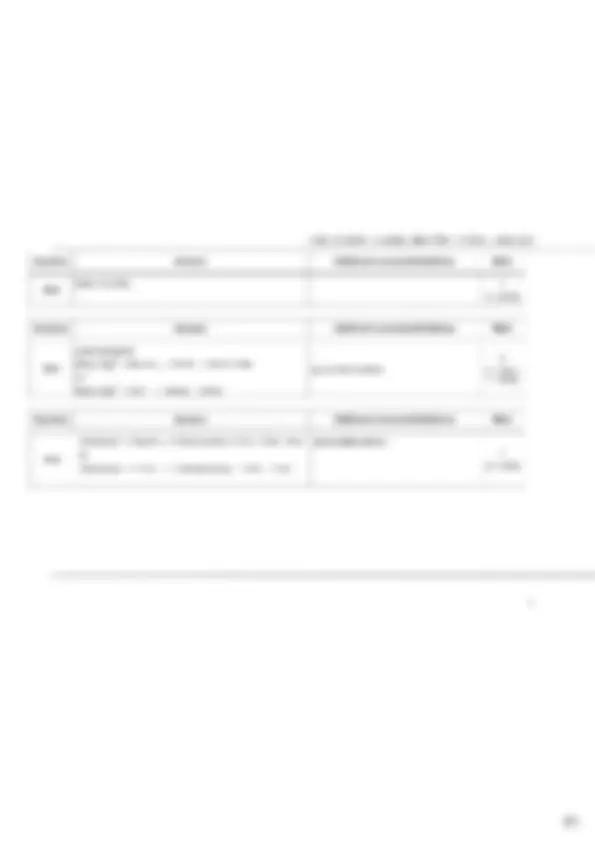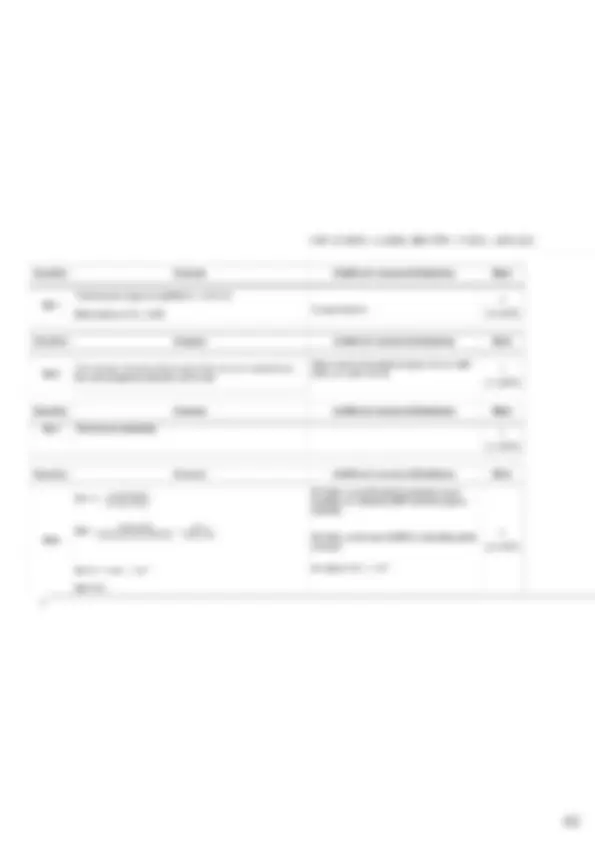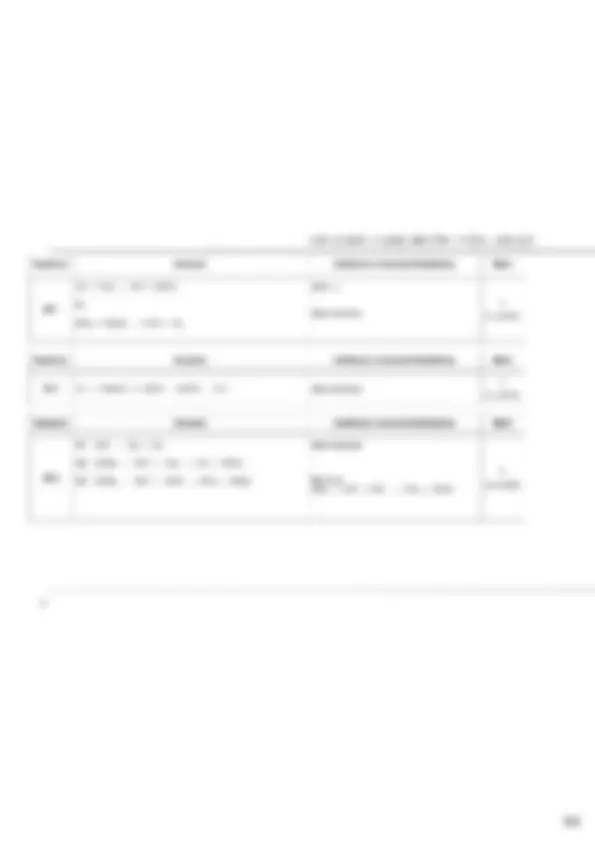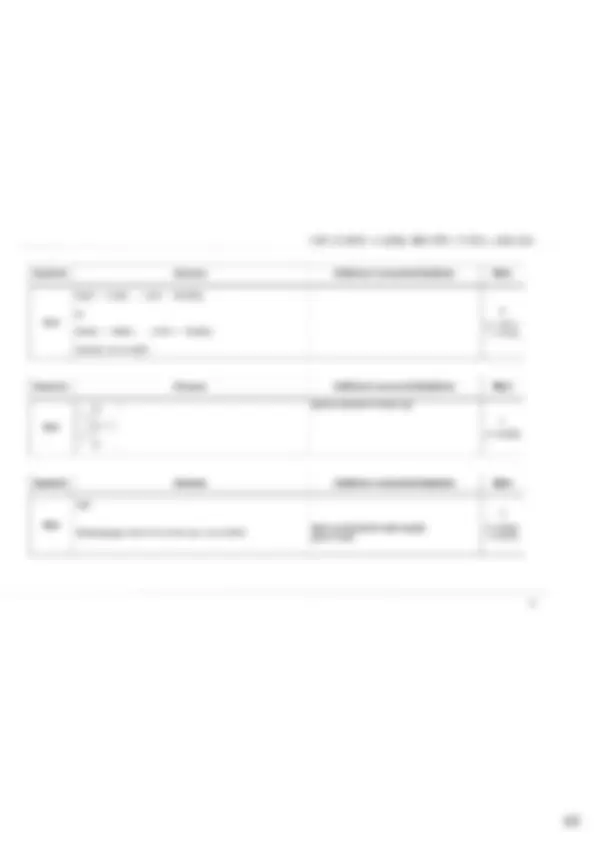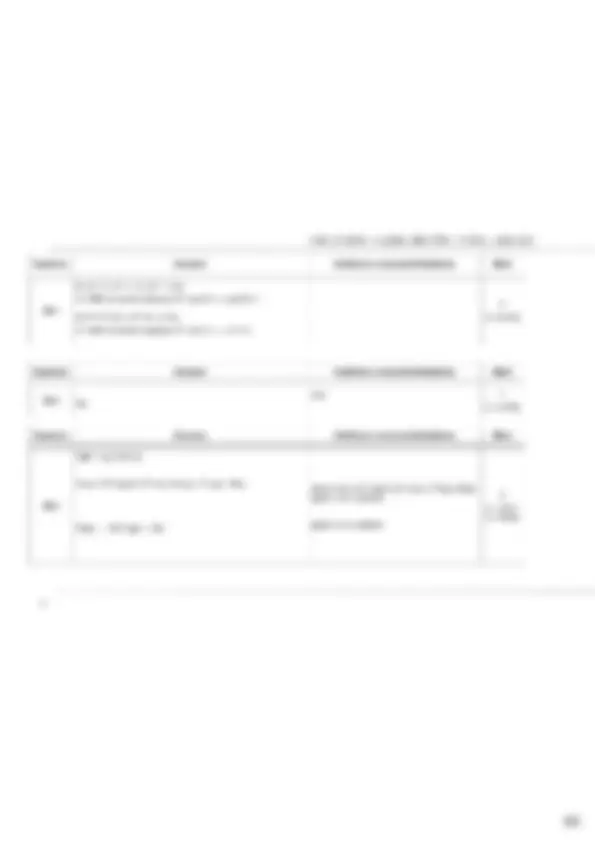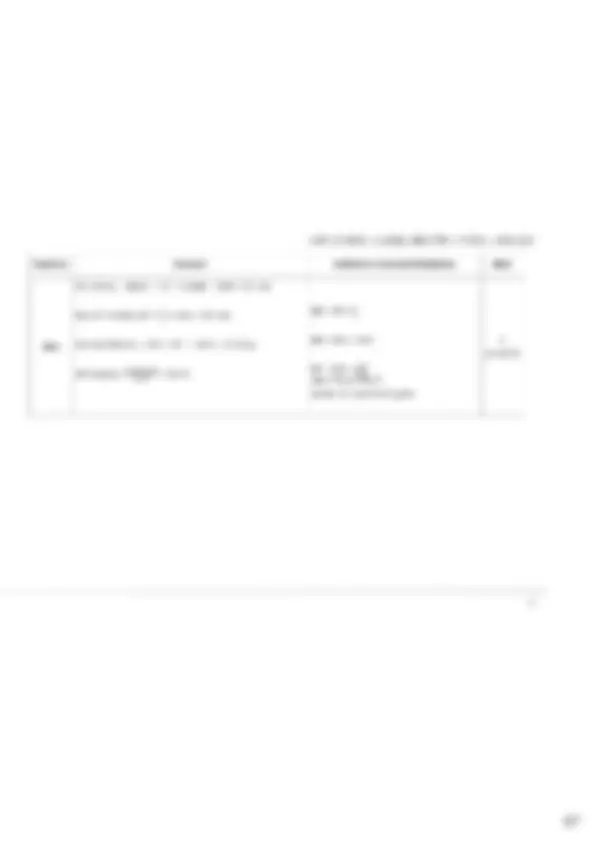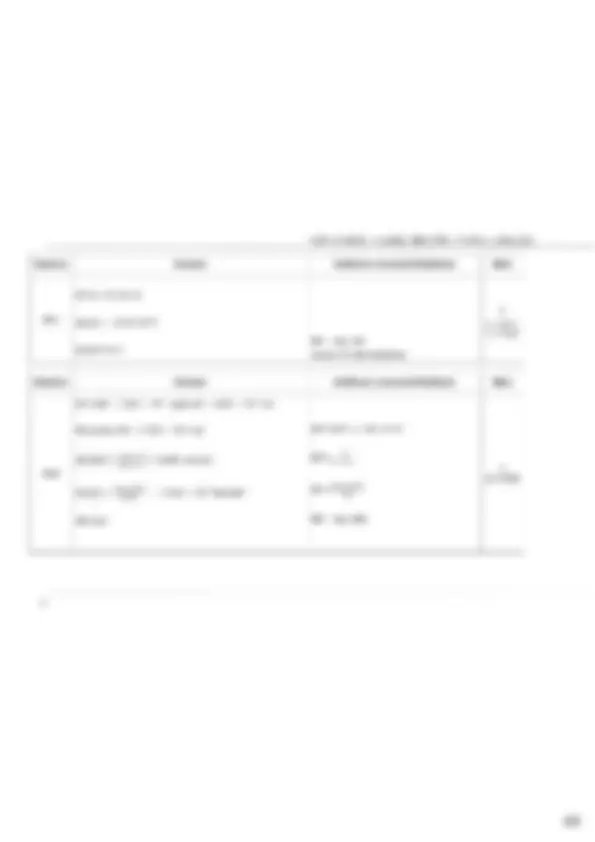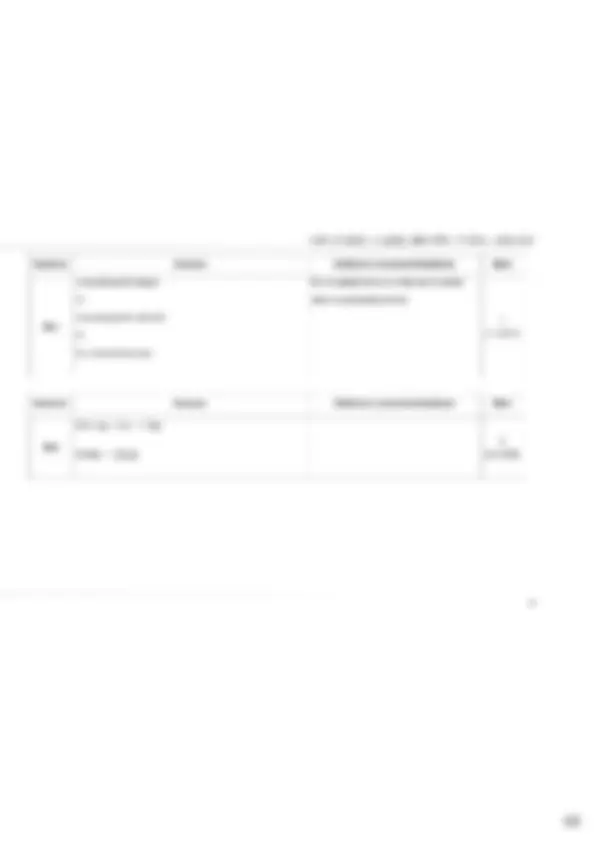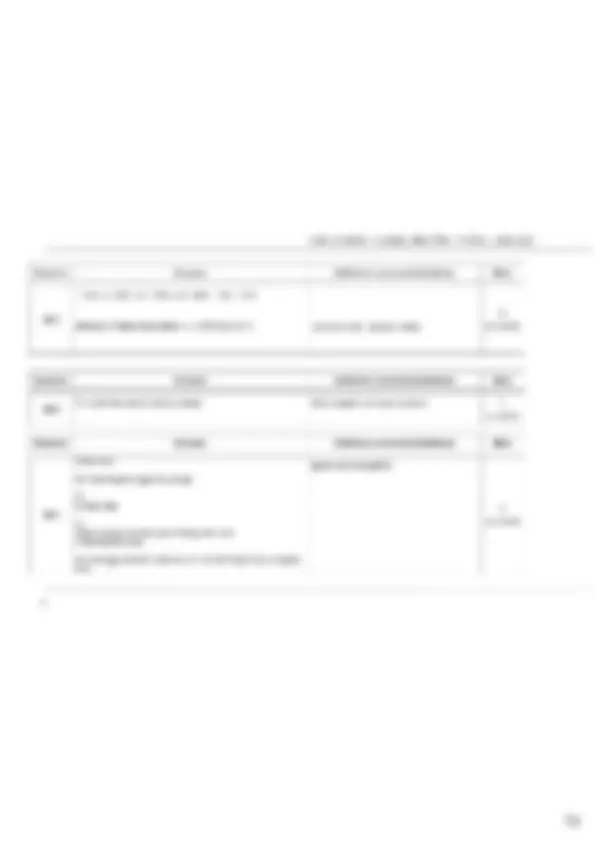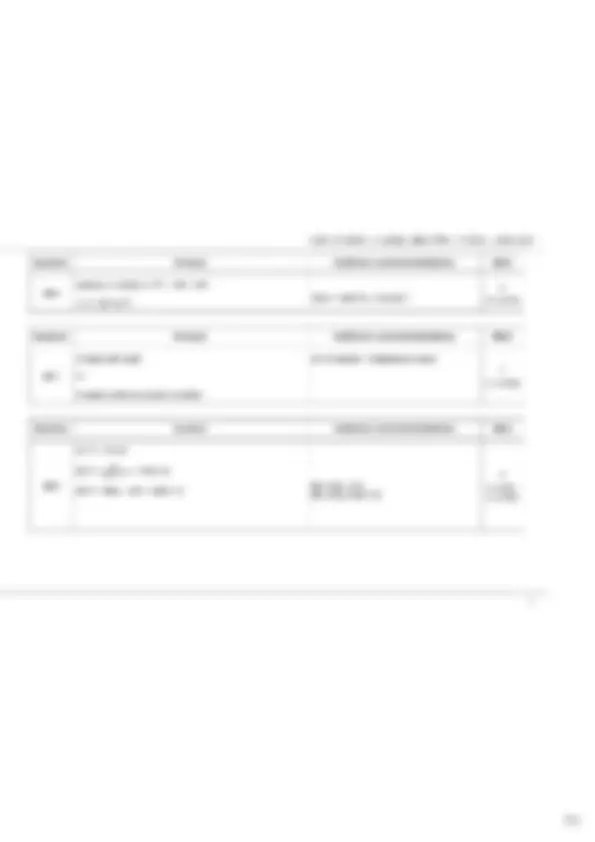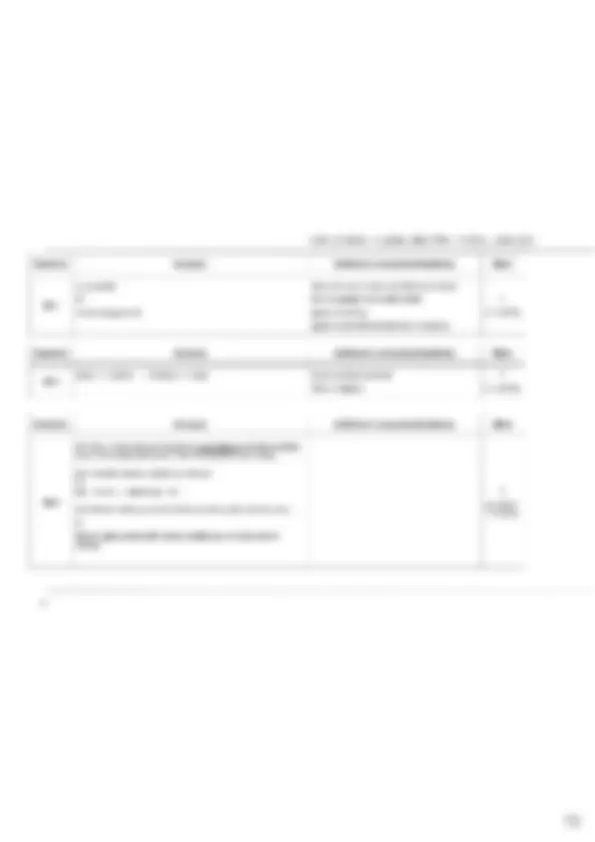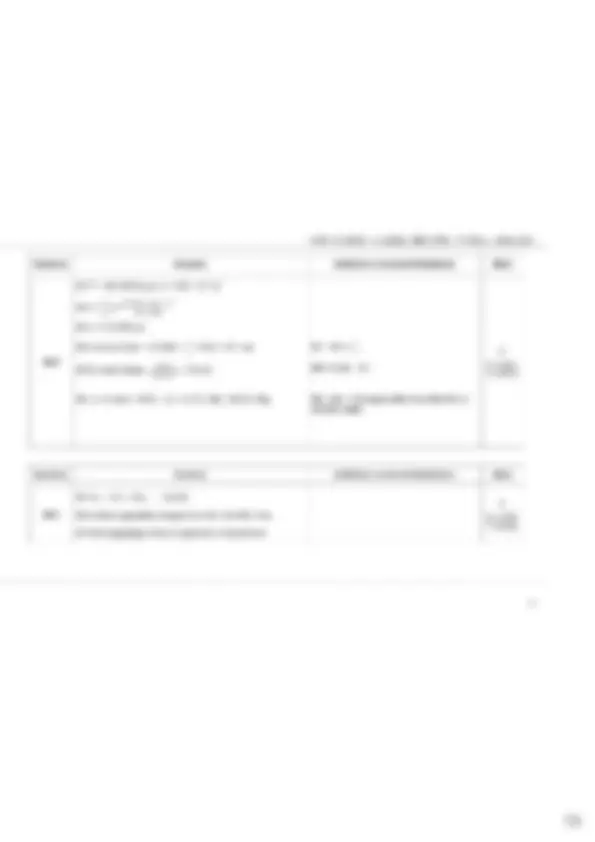Partial preview of the text
Download . Actual 2024 AQA A-LEVEL CHEMISTRY 7405/1 Paper 1 Merged Question Paper + Mark Scheme + and more Exams Chemistry in PDF only on Docsity!
Actual 2024 AQA A-LEVEL CHEMISTRY 7405/1 Paper 1 Merged Question Paper + Mark Scheme + Insert AQA= Please write clearly in block capitals. Centre number Candidate number Surname Forename(s) Candidate signature | declare this is my own work. A-level CHEMISTRY Paper 1 Inorganic and Physical Chemistry Monday 10 June 2024 Morning Time allowed: 2 hours Materials For this paper you must have: For Examiners Use e the Periodic Table/Data Booklet, provided as an insert (enclosed) ¢ aruler with millimetre measurements Question Mark ¢ ascientific calculator, which you are expected to use where appropriate. 1 Instructions e Use black ink or black ball-point pen. ¢ Fill in the boxes at the top of this page. « Answer all questions. « You must answer the questions in the spaces provided. Do not write outside the box around each page or on blank pages. If you need extra space for your answer(s), use the lined pages at the end of this book. Write the question number against your answer(s). All working must be shown. 9 ¢ Do all rough work in this book. Cross through any work you do not want to be marked. TOTAL e!/N/oalal}alo|nr Information ¢ The marks for questions are shown in brackets. * The maximum mark for this paper is 105. IL 0 OSH 2 Do not write a Ay A outside the Answer all questions in the spaces provided. box This question is about atomic structure. [o[4].[1] In 1897 JJ Thomson discovered the electron. He suggested that atoms were INI positively charged spheres with electrons embedded within them. Figure 1 represents an atom using Thomson’s model. Figure 1 Sphere of positive charge Electron Suggest the identity of this atom. Give two differences between the modern model of an atom and the Thomson model of an atom. [3 marks] Identity Difference 1 Difference 2 IB/M/Jun24/7405/1 2 Do not write outside the [0] 1].[4] In the TOF mass spectrometer an ion of an isotope of tellurium, with mass number y, box 04 travels along a 1.25 m flight tube with a kinetic energy of 1.88 x 10-7 J The ion takes 3.00 x 10~’ s to reach the detector. 41 KE=; mv KE = kinetic energy / J m= mass /kg v=speed/ms Calculate the mass, in g, of 1 mole of these tellurium ions. Use your answer to suggest the mass number y of the tellurium isotope. The Avogadro constant, L = 6.022 x 1073 molt [5 marks] Mass g Mass number y IB/M/Jun24/7405/1 4 [o/1].[5] Tellurium has several other isotopes. 05 Two of these isotopes are °Te and “Te A different sample of tellurium is analysed using a TOF mass spectrometer. Which statement about kinetic energy (KE) is correct? Tick (Vv) one box. The KE of '*Te* is greater than the KE of '“Te* The KE of Te’ is the same as the KE of Te* The KE of Te’ is less than the KE of '“Te* Turn over for the next question [1 mark] Turn over > IB/M/Jun24/7405/1 Do not write outside the box (o[2][4] (o[2][2] (o[2][3] 07 This question is about an experiment to determine the solubility of strontium hydroxide in water at 20 °C Strontium hydroxide is slightly soluble in water. Strontium hydroxide solution reacts in a similar way to calcium hydroxide solution. ¢ Some solid strontium hydroxide is added to approximately 1 dm? of distilled water in a stoppered flask. « The mixture is kept at 20 °C. Every day, the mixture is checked. If no solid is present in the flask, more solid strontium hydroxide is added. « On the day when no more solid needs to be added, the flask is opened and the mixture is filtered into another flask and stoppered. ¢ A 25.0 cm® sample of the filtrate is transferred to a conical flask with a pipette and a few drops of indicator added. ¢ This sample is titrated with 0.100 mol dm hydrochloric acid. ¢ The titration is repeated several times with further samples of the filtrate. The results are shown in Table 1 on page 8. Suggest why the solution is kept until no more solid needs to be added. [1 mark] Suggest why it is important to remove the undissolved strontium hydroxide before the titration. [1 mark] After the filtration, the solution is stored in a stoppered flask. Suggest a reason for stoppering the flask. [1 mark] Question 2 continues on the next page Turn over > IB/M/Jun24/7405/1 Do not write outside the box Do not write outside the [0] 2].[4] The diagrams in Figure 2 show the part of a pipette with the graduation line. box Which diagram identifies the pipette that is correctly filled? [1 mark] Tick (“) one box. Figure 2 A B c [o[2].[5| Solubility can be quoted as ‘g of solute per 100 cm‘ of solution’. Table 1 shows the results of the titrations between strontium hydroxide and hydrochloric acid. These can be used to determine the solubility of strontium hydroxide. Table 1 Titration Rough 1 2 3 Final burette reading / cm? 34.40 38.00 41.05 37.00 Initial burette reading / cm? 0.00 5.55 8.05 4.60 Titre / cm? 34.40 32.45 33.00 32.40 Give the equation for the reaction between strontium hydroxide and hydrochloric acid. Use the results in Table 1 to calculate the mean titre. Use the mean titre to calculate the solubility of strontium hydroxide, in g per 100 cm? of solution, at 20 °C [6 marks] 08 IB/M/Jun24/7405/1 8 10 Do not write outside the box There are no questions printed on this page DO NOT WRITE/ON THIS PAGE ANSWER IN THE/SPACES PROVIDED INIA IB/M/Jun24/7405/1 10 11 This question is about aqueous ions of the metal iron. When an aqueous [Fe(H20).]** ion reacts with ethanedioate ions, an iron(IIl) complex ion X is formed. The only ligands in X are ethanedioate ions. [0] 3].[1| Draw the structure of X. Include the charge. [2 marks] [0] 3].[2] The formation of X is an example of the chelate effect. Explain the meaning of the chelate effect. [2 marks] Question 3 continues on the next page Turn over > 11 IB/M/Jun24/7405/1 Do not write outside the box 11 13 Do not write outside the box Turn over > 13 IB/M/Jun24/7405/1 13 (o[ 3) [4] (o[3][5] [o[3][6] 1 14 Do not write outside the A student adds dilute ammonia solution to a solution containing [Fe(H20).]** ions. box Give the formula of the precipitate that forms. [1 mark] The student adds sodium carbonate solution to a solution containing [Fe(H20).]?* ions. State one observation the student would make. Give an equation for the reaction. [2 marks] Observation Equation A solution containing [Fe(H20)6.]** ions changes to a yellow-brown colour after several hours in contact with air. The student adds sodium carbonate to the yellow-brown solution. Give an equation for the reaction with sodium carbonate. [1 mark] IB/MiJun24/7405/1 14 16 Do not write outside the [0] 4].[3] The temperature of the equilibrium mixture formed in Question 04.1 is increased. box How does the amount of H2(g) change when the new position of equilibrium is reached? [1 mark] Tick (W) one box. The amount decreases. The amount does not change. The amount increases. Ethanol can be made from ethene and steam. CoHa(g) + H20(g) = CHsCH2OH(g) AH = -45 kJ mol Table 2 shows the mole fractions of each of the gases in an equilibrium mixture at 6000 kPa Table 2 Gas Mole fraction Ethene 0.645 Steam 0.323 Ethanol 0.0321 16 IB/MiJun24/7405/1 16 17 Do not write outside the [0] 4].[4] Give an expression for Kp for this reaction. box Calculate the value of Kp at 6000 kPa State the units. [4 marks] Kp Units [0[4].[5| State the effect, if any, of an increase in volume of the container on the value of K, for this reaction at a constant temperature. [1 mark] Turn over for the next question Turn over > 17 IB/M/Jun24/7405/1 17 (o|5][6] 19 Do not write outside the [0] 5].[4] Give the equation for the reaction of solid sodium chloride with box concentrated sulfuric acid. State the role of the chloride ions in this reaction. [2 marks] Equation Role Draw the shape of the Cls" ion. Include any lone pairs of electrons that influence the shape. [1 mark] Chlorine forms an ion with the Group 3 element thallium (Tl). State and explain the bond angle in TICl.* [2 marks] Bond angle Explanation 10 1 9 Turn over > IB/M/Jun24/7405/1 19 20 This question is about vanadium ions. Table 3 shows some standard electrode potential values. Table 3 E°lv O.(g) + 4H*(aq) + 4e° 3 2H,0(\) +1.23 VOz"(aq) + 2H*(aq)+ e — VO**(aq) + H20(l) +1.00 VO**(aq) + 2H*(aq) + & — V*(aq) + H20(I) +0.34 V*(aq) + e& = V**(aq) 0.26 Fe**(aq) + 2e° > Fe(s) 0.44 Zn**(aq) + 2e° — Zn(s) -0.76 V**(aq) + 2e > V(s) -1.20 Mg?*(aq) + 2e° — Mg(s) 2.38 [o[6]}.[1| Use the data in Table 3 to explain why Zn reduces an aqueous solution of VO2* ions to V** ions, but does not reduce it any further. [2 marks] [o[6].[2| Identify the species in Table 3 that can reduce an aqueous solution of VO2" to V 20 [1 mark] IB/M/Jun24/7405/1 Do not write outside the box 20 
